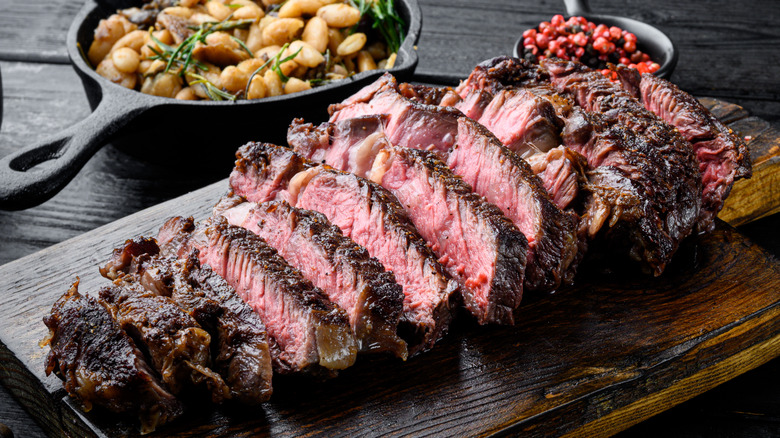The Simple Method Alton Brown Uses To Dry Rib Roast At Home
Alton Brown is known for taking chances and experimenting in the kitchen. The "Good Eats" host actually entered the culinary world because he wanted to understand the science of food just as much as learn to create delicious dishes, and felt the TV programs he was watching were lacking. Brown shared with The Bitter Southerner, "I got a recipe, OK, but I don't know anything. I didn't even learn a technique. To learn means to really understand. You never got those out of those shows." That's what prompted Brown to quit his job and go to culinary school. Fast forward to present day, and the apprentice has become the master. Brown has been sharing kitchen tips and tricks over on YouTube, including the drying method he uses for his holiday standing rib roast.
Standing rib roast, as the Kitchn explains, is often served during the holidays or enjoyed at fancy restaurants to celebrate special occasions. This cut comes from the rib section of a cow and is a large, tender piece of meat encompassed by fat. It is also an expensive cut, as Brown candidly notes, which means you don't want to mess it up. Enter his somewhat time-consuming, cheesy prep step.
Brown advises you let the cut dry for a week
Brown revealed in a video that he likes to wrap his standing rib roast in cheesecloth and leave it in the refrigerator for a week before cooking. But is the excessive prep really worth it?
Brown says yes, sharing that his roast lost three ounces of weight due to evaporation using this method. He went on to explain that the cheesecloth is particularly important, as it shields the meat surface from becoming "rock hard" as it dries. (The Food Network star was quick to note that this is not the same as dry aging, which is a much more complex process.) Brown says following this admittedly lengthy step will ultimately increase the flavor of the meat and allow you to get a great char when you cook it.
Whether you grill or roast your standing rib roast, the Kitchn says you want to be cautious to not cook it past an internal temperature of 140 degrees Fahrenheit. Anything higher and you risk having a sore mouth from chewing what will assuredly be a dry and tough piece of meat, wasting not only your week of planning but also your money.

